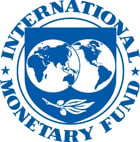
Typical street scene in Santa Ana, El Salvador. (Photo: iStock)
IMF Survey: Caribbean’s St. Kitts Gets Opportunity for Transformation
September 2, 2011
- IMF approves $84 million three-year loan for Caribbean's St. Kitts and Nevis
- Program aims to boost growth, strengthen public finances, cut public debt
- Reform efforts to be complemented by comprehensive debt restructuring
The IMF’s Executive Board approved a three-year Stand-By Arrangement with the Caribbean islands of St Kitts and Nevis amounting to about $84 million (EC $228 million) to help boost growth and reduce its high public debt levels, indirectly also strengthening the regional currency union.

Store in St. Kitts, where authorities have moved to promote sustained economic growth and to strengthen public finances (photo: David Herbig/Newscom)
CARIBBEAN DEBT
Like many of the other Caribbean countries, St. Kitts and Nevis was hit hard by the 2008–09 global financial crisis, resulting in a further deterioration in the country’s fiscal position and exacerbating an already high public debt. In addition, the country has been further hit by the recent international food and fuel price increases.
A significant drop in tourism, a slowdown in tourism-related construction and foreign direct investment, as well as the closure of the largest tourism resort in Nevis following Hurricane Omar, all contributed to a significant decline in growth in 2009 and 2010. Tax revenue declined 13.5 percent in 2010 and the deficit widened to 9.4 percent of GDP.
At end 2010, St. Kitts and Nevis had a debt of almost 200 percent of GDP—the highest public debt level among all emerging markets and developing countries—and exposed clearly the country’s vulnerability. St. Kitts and Nevis, a country of about 50,000 people, is one of eight members of the Eastern Caribbean Currency Union (ECCU) and solvency issues in any one country can spill over to other members of the union.
To address these challenges, the authorities have taken steps to create the conditions for sustained economic growth and to substantially strengthen public finances, and have launched the process for a comprehensive debt restructuring to reduce the country’s public debt burden. On the basis of the government’s home-grown program, the authorities have sought IMF support, including through financial assistance.
“The economic program is a real paradigm change for St. Kitts and Nevis, laying the foundations for strong economic growth and reduced vulnerabilities,” according to Alfred Schipke, mission chief for St. Kitts and Nevis. “In this context the IMF loan provides the necessary financial support including in the form of an ‘insurance policy’ via the banking sector support fund," he added after the IMF Board’s July 27 approval of the loan.
Areas for reform
The IMF-supported reform program encompasses a three-pronged approach.
• Fiscal consolidation—allowing revenue to rise up front and containing spending increases, while at the same time making efforts to protect the most vulnerable groups. As part of these efforts, the authorities have already implemented important revenue measures, such as introducing a value-added tax and increasing electricity tariffs, which are already yielding results. On the expenditure side, the public sector wage bill has been frozen until 2013—implying a notable reduction in real wages over the period—and capital spending has been prioritized.
• Comprehensive debt restructuring to address the debt overhang. The government has moved forward on a process of negotiating a comprehensive and substantive public debt restructuring, which will ensure that the burden of adjustment is shared by all. This process is in train. The authorities expect that debt restructuring will put public debt on a sustainable trajectory over the medium term.
• Strengthening the financial sector. The banking sector is very well capitalized. In addition, the government has established a Banking Sector Reserve Fund—managed by the Eastern Caribbean Central Bank—as a backstopping mechanism for temporary liquidity support for solvent banks, if needed.
The government’s policy framework also incorporates structural measures aimed at strengthening the efficiency and effectiveness of public spending. These measures include improving public financial management; pension reform; civil service reform; and social safety net reforms.
The protection of vulnerable groups is an essential priority throughout the program period and beyond. The ultimate goal over the medium term is a coherent social protection strategy that will rationalize programs and better link social assistance to actions aimed at building human capital in the country.
Model for other Caribbean countries
Since St. Kitts and Nevis is an important member of the ECCU, these reform measures are not only expected to benefit St. Kitts and Nevis, but would further strengthen the ECCU. As, Schipke noted, “There are a number of elements in the St. Kitts and Nevis program that could possibly serve as a model for other countries in the region, including, for example, the Banking Sector Reserve Fund.” The IMF has also reached out to various stakeholders in the country to exchange views on elements of the program and to better explain the program and its implications.


